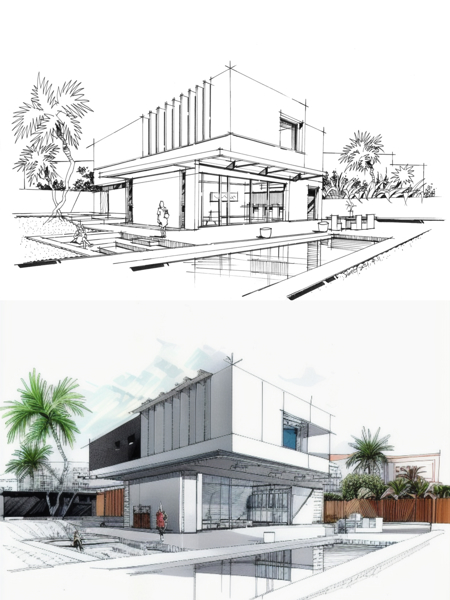A Comprehensive Overview of Building Designs and Their Influence on Modern City Preparation and Growth
Building styles have long functioned as a mirror to the social worths and technological advancements of their time, playing an essential function fit modern-day city preparation and growth. From the majesty of Neoclassicism to the practical approach of Brutalism, each style has introduced one-of-a-kind principles that influence metropolitan appearances and capability. As contemporary challenges arise, including sustainability and area requirements, understanding these historical structures comes to be necessary. The resulting dialogue not only notifies future style practices yet also increases pertinent inquiries about the equilibrium between heritage and technology in our advancing urban landscapes.
Historical Overview of Architectural Designs

As societies transitioned via the Middle Ages, Gothic style emerged, characterized by its verticality and complex describing, mirroring the spiritual desires of the era. The Renaissance noted a rebirth of classic suitables, merging art and design in ingenious manner ins which influenced subsequent styles across Europe.

Today, architectural styles proceed to evolve, driven by globalization and sustainability issues, reflecting a dynamic interplay between heritage and innovation. This historical introduction emphasizes the importance of style as a mirror of societal development and as a catalyst for city development.
Secret Architectural Styles Explained
The diversity of architectural designs reflects the myriad influences that shape our constructed atmosphere, each symbolizing unique features and social importances. Secret architectural styles include Classic, Gothic, Baroque, Innovation, and Postmodernism, each standing for distinct historical contexts and aesthetic ideologies.
Classical architecture, rooted in old Greece and Rome, highlights balance, proportion, and making use of columns (cda architects). In comparison, Gothic design, growing between Ages, is defined by pointed arcs, ribbed safes, and flying buttresses, developing an angelic quality in basilicas. Baroque style, arising in the 17th century, is marked by grandeur, elaborate ornamentation, and a vibrant interaction of light and darkness
Modernism, which got energy in the early 20th century, focuses on function over kind, utilizing new products like steel and glass to produce minimalist structures. Postmodernism, responding against the austerity of Innovation, embraces eclecticism and historic recommendation, frequently integrating lively aspects and irony.

Influence on Urban Planning
In forming the development of cities, building styles considerably affect city preparation decisions. The option of building design typically determines the visual appeals, capability, and total character of metropolitan environments.
Additionally, architectural designs can impact zoning guidelines and land utilize plans. Urban coordinators have to think about the dominating architectural fads when developing districts, making sure that new growths balance with existing structures. This factor to consider fosters cohesive urban landscapes and boosts community identity.
The application of particular architectural styles can likewise influence socioeconomic aspects within a city. High-end modern styles may bring in affluent residents and services, leading to gentrification, while more economical housing services may focus on sensible and sustainable layouts to fit varied populaces. cda architects. Inevitably, the interplay in between architectural designs and metropolitan planning creates vibrant cities that mirror both historical context and modern requirements, forming the lived experiences of their citizens
Sustainability and Modern Style
Building styles play a critical duty in addressing contemporary difficulties, specifically in the realm of sustainability. As metropolitan locations expand and ecological issues increase, modern-day style increasingly see page embraces lasting style concepts that focus on power efficiency, resource preservation, and minimal eco-friendly influence.
Contemporary architectural motions, such as biophilic layout and environment-friendly style, advocate for frameworks that balance with their surroundings, utilizing all-natural products and promoting biodiversity. These styles frequently incorporate renewable energy sources, such as solar panels and wind turbines, to reduce dependence on fossil gas and lower carbon impacts.
Additionally, the combination of innovative modern technologies, such as wise building systems, improves energy monitoring, optimizing source usage while making sure passenger comfort. Innovative water management techniques, including rainwater harvesting and greywater recycling, more add to sustainable urban atmospheres.
Significantly, sustainability expands past environmental concerns; it includes social and economic measurements. By promoting community health and promoting inclusivity, modern architectural designs align with lasting development objectives. The advancement of building techniques continues to form durable cities that not just meet the needs of the existing but also safeguard the future for generations to come.
Neighborhood Interaction in Style
Area engagement in style works as a vital bridge between engineers and the populations they offer, making certain that the constructed environment mirrors the needs and desires of its customers. This joint process invites neighborhood members to contribute their understandings and choices, promoting a sense of possession and obligation towards the rooms they populate.
Effective community engagement uses various techniques, such as workshops, surveys, and public discussion forums, to gather diverse perspectives. These strategies assist in a two-way dialogue, allowing designers to recognize regional contexts while empowering homeowners to articulate their concerns and desires. This inclusivity not only improves the style top quality yet additionally promotes social equity by attending to the one-of-a-kind obstacles faced by marginalized groups.
In addition, neighborhood engagement can bring about ingenious services that could not arise in a standard design procedure. By integrating regional knowledge and cultural try this out values, engineers can create rooms that resonate even more deeply with individuals, enhancing functionality and sustainability. Eventually, focusing on neighborhood interaction in design processes causes settings that nurture social communications, assistance wellness, and strengthen neighborhood connections, thereby playing a pivotal role in shaping contemporary city landscapes.
Conclusion
Building styles have actually profoundly affected contemporary city planning and development, reflecting advancing social and technological contexts. The integration of historic aesthetics with contemporary needs fosters urban environments that prioritize sustainability and community involvement. As cities proceed to grow and adapt, the continuous discussion in between building heritage and modern style concepts will remain crucial in creating comprehensive, lively areas that enhance high quality of life and advertise social equity. The future of city growth depend upon this harmonious balance.